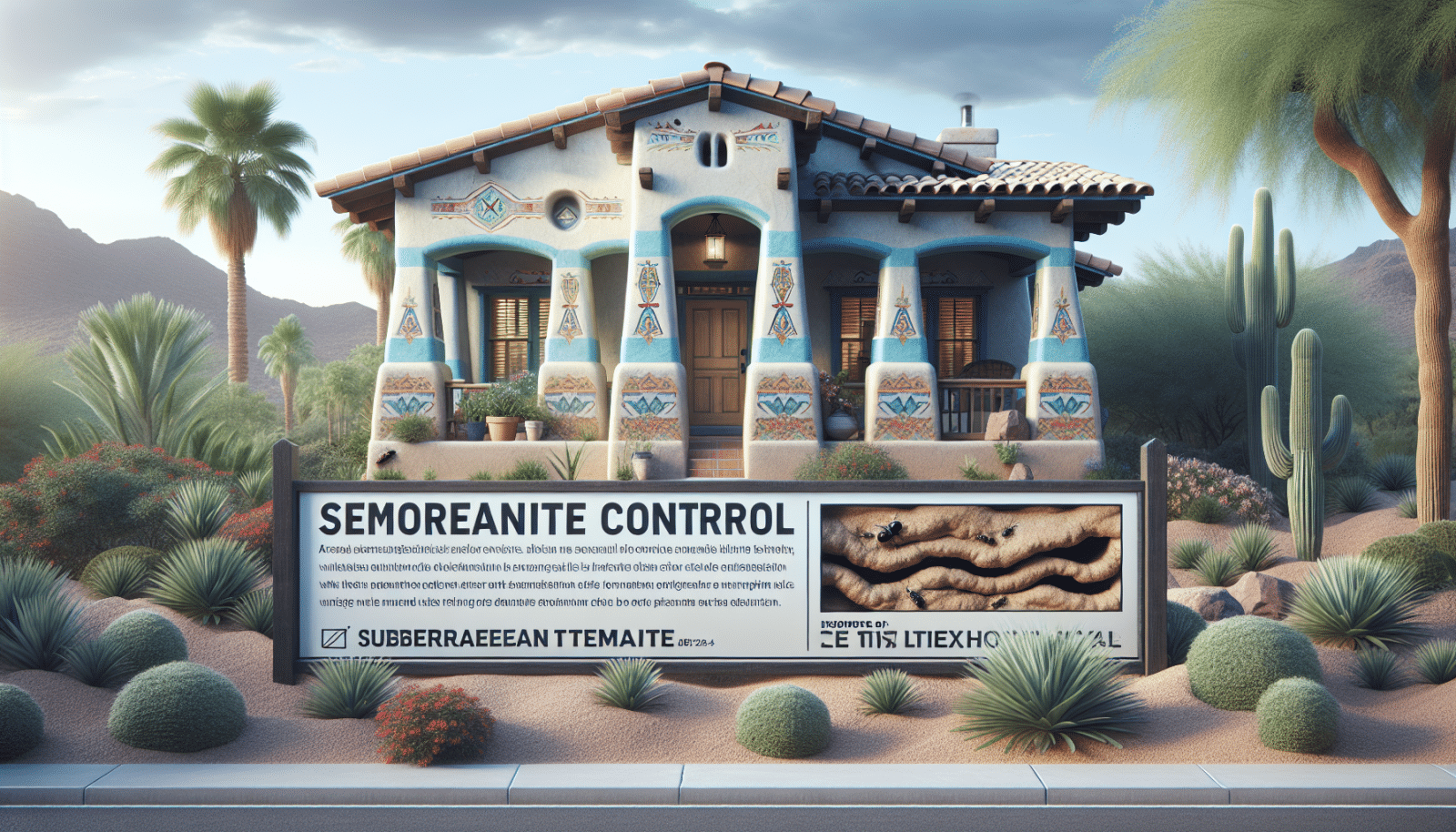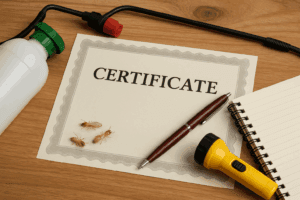Subterranean termites are one of the most common and destructive Pests homeowners can encounter, causing billions of dollars in damage to properties throughout the United States annually. As Arizona Termite Control, we’re here to guide you through understanding, preventing, and getting rid of these unwelcome guests. This ultimate guide is especially made for homeowners who wish to safeguard their havens from the havoc these pests can wreak. By the end of this post, you’ll be equipped with effective tips and strategies to protect your home.
Contents
- 1 Understanding Subterranean Termites
- 2 Preventative Measures for Your Home
- 3 DIY Termite Control Methods
- 4 When to Call a Professional
- 5 Choosing the Right Termite Control Company
- 6 Maintaining a Termite-Free Home
- 7 Common Signs of Termite Infestations
- 8 Environmental Considerations in Termite Control
- 9 Key Strategies for Subterranean Termites Control
Understanding Subterranean Termites
Before you can effectively tackle subterranean termites, it’s crucial to understand what you’re up against. These termites live in underground colonies and can number in the millions. They are primarily attracted to wood, which means your home can be a prime target for these invasive pests. Recognizing the early signs of an infestation—such as mud tubes on exterior walls, hollow-sounding wood, and swarms of winged termites—is the first step in proactive Prevention.
Understanding their behavior and lifecycle also plays a critical role in effectively managing their presence. Subterranean termites require moisture to survive, which is why they build distinctive mud tubes to travel to food sources above ground. These characteristics are essential in identifying and targeting treatments to effectively control their populations.
Preventative Measures for Your Home
To keep subterranean termites at bay, there are several preventative steps you can take. Firstly, eliminating moisture around your home’s foundation is key. Ensure gutters and downspouts are directing water away from your home effectively. Additionally, maintain an 18-inch gap between soil and any wood portions of your home to reduce the risk of termite entry.
Ventilation is also crucial in preventing termite infestation. Ensure your crawl space and attic are well ventilated to reduce moisture buildup that attracts termites. Regular Inspections of your home’s foundation, windows, and door frames for signs of termites can also help catch an infestation early, making Treatment more manageable and potentially less costly.
DIY Termite Control Methods
While professional intervention is often necessary for termite infestations, there are DIY methods that can help deter these pests. Creating physical barriers, such as using termite-resistant wood for any ground-contact structures, can be an effective deterrent. Applying termiticide around the perimeter of your home is another method homeowners can take on themselves, though it’s important to carefully follow product instructions to ensure safety and effectiveness.
Implementing simple landscaping changes, like removing old tree stumps and keeping mulch at least 15 inches from your home’s foundation, can also reduce the risk of a termite infestation. Regularly inspecting wood structures around your home for signs of damage can help you catch infestations early, before they become severe.
When to Call a Professional
Despite your best efforts, some termite infestations are too advanced for DIY methods to be effective. If you find extensive mud tubes, witness a termite swarm, or uncover significant wood damage, it’s time to call in the professionals. Expert termite control specialists have the tools and knowledge to assess the extent of an infestation and recommend the appropriate treatment plan.
Working with a reputable Termite Control Company ensures that the infestation is treated thoroughly, reducing the likelihood of a reinfestation. Professional treatment options can include liquid soil treatments, bait systems, and even fumigation, depending on the severity and location of the infestation.
Choosing the Right Termite Control Company
Not all termite control companies are created equal. When selecting a professional to address your termite concerns, look for companies with extensive experience dealing with subterranean termites in your area. Ensure they offer a comprehensive inspection service and provide detailed treatment plans, including follow-up inspections to ensure the termites have been completely eradicated.
Don’t hesitate to ask for references and confirm that the company is licensed and insured. This not only protects your property but also ensures that the company adheres to industry standards and practices. Choosing the right termite control company is crucial in effectively addressing your termite issues and preventing future infestations.
Maintaining a Termite-Free Home
After professional treatment, ongoing vigilance is key to keeping your home termite-free. Regular inspections, at least once a year, can help detect potential problems before they escalate. Additionally, maintaining the preventative measures previously mentioned plays a significant role in discouraging termites from targeting your home again.
Maintain records of all inspections, treatments, and any termite activity. This information is valuable for both homeowners and professionals in monitoring the health of your home over time. Staying proactive in Termite Prevention is the best strategy to ensure your home remains safe and secure from these destructive pests.
Common Signs of Termite Infestations
Recognizing the signs of a termite infestation early can save you time and money. Look out for mud tubes on exterior walls, which termites use to travel from their underground colonies to their food sources. Swollen floors and ceilings can also indicate termite damage beneath the surface.
Another common sign is the presence of termite wings, often found near windowsills or doors. Termites shed their wings when they swarm to start a new colony, which usually occurs in spring. Finding these wings in your home can be an early warning sign of a potential infestation.
Environmental Considerations in Termite Control
Today, environmental impact is a significant concern for many homeowners when it comes to pest control. Fortunately, advancements in termite control methods have led to more environmentally friendly options. Non-toxic bait systems are designed to target only termites, reducing the harm to other wildlife.
Biological control methods, such as introducing natural termite predators, are another avenue being explored. These methods aim to manage termite populations without the extensive use of chemicals, providing a more sustainable solution to termite control.
Key Strategies for Subterranean Termites Control
- Regular Inspections: Conduct annual inspections to identify potential termite activity before it becomes a larger problem.
- Maintenance: Keep up with home maintenance, especially regarding moisture control and wood-to-ground contact, to mitigate termite attraction.
- Professional Help: Seek professional advice at the first sign of termites to evaluate the extent of an infestation and the best course of action.
- Chemical Barriers: Consider the use of termiticides around your home’s perimeter as a defensive measure against termites.
- Environmental Management: Adopt landscaping and housekeeping practices that reduce conducive conditions for termite infestations.
In conclusion, understanding and implementing strategies for subterranean termite control are crucial for homeowners seeking to protect their investment. Regular vigilance, combined with professional guidance when necessary, provides the best defense against these destructive pests. If you suspect a termite issue or simply want to ensure your home is protected, don’t hesitate to reach out to Arizona Termite Control by phone at 480-660-3093 or Request a Free Inspection. Protecting your home starts with taking the right steps today.




